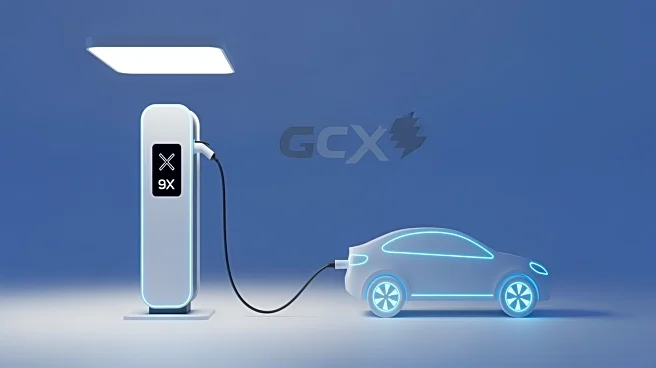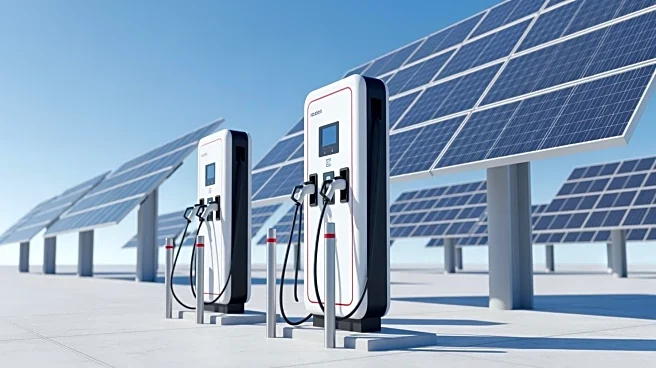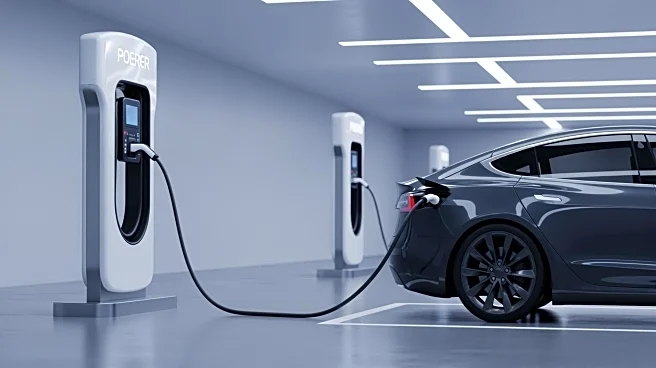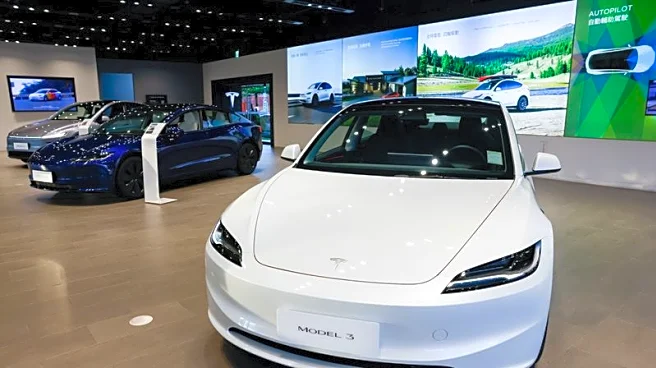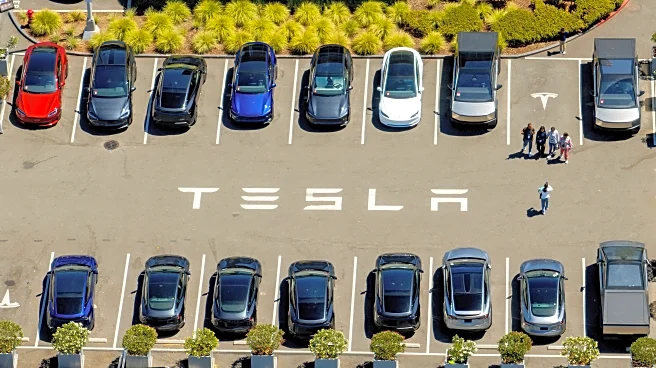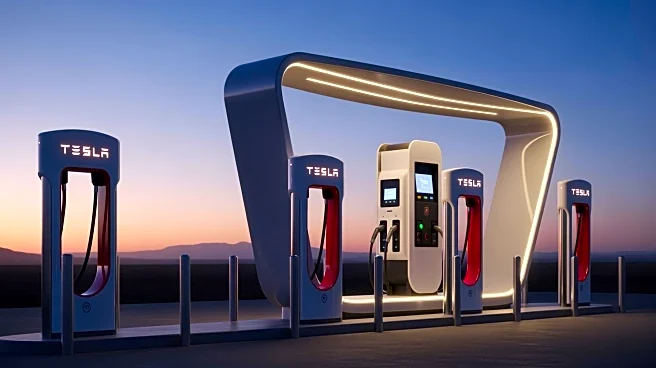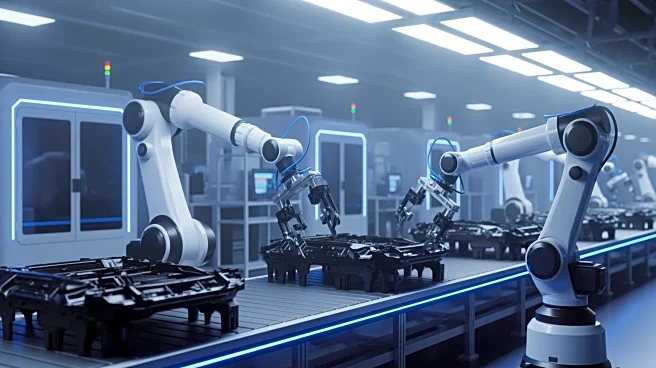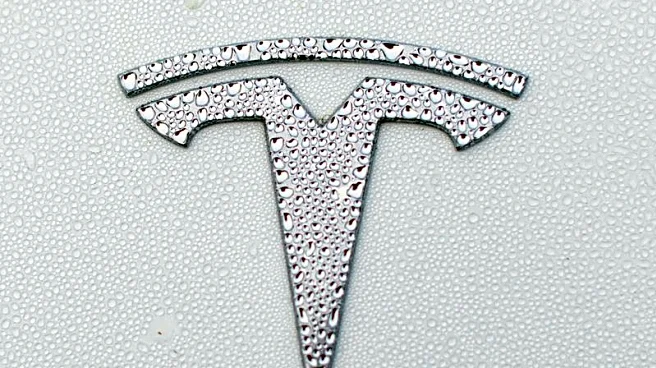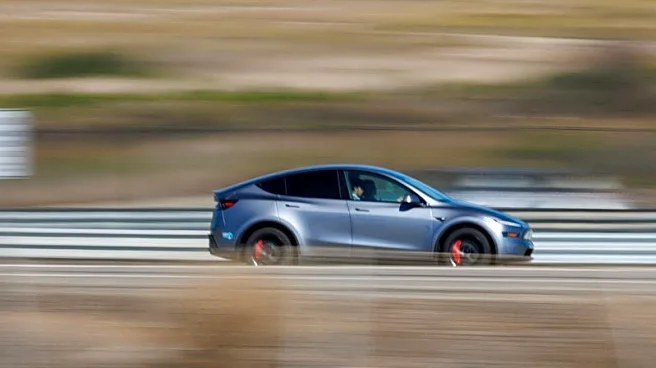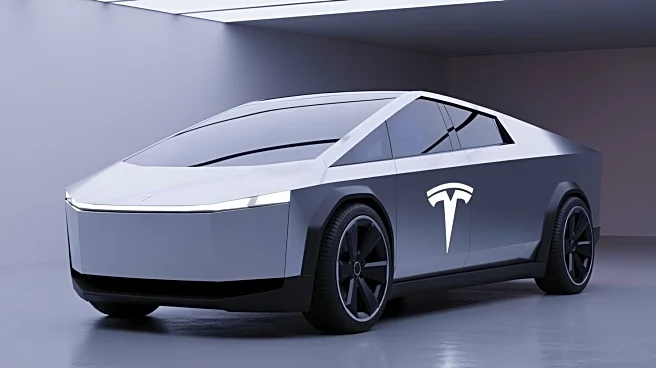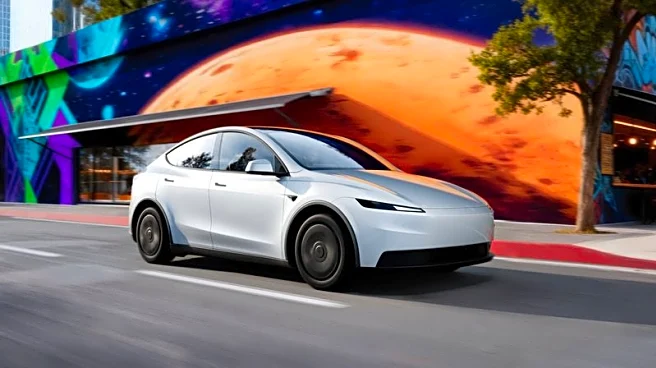What's Happening?
Tesla reported a significant drop in earnings for the third quarter, despite achieving record sales of nearly 500,000 electric vehicles. The decline in profit is attributed to the expiration of a $7,500
federal tax credit on October 1, which had previously incentivized American buyers to purchase electric vehicles. This expiration led to a surge in sales before the deadline, but is expected to result in a decrease in demand in the fourth quarter. Additionally, Tesla is facing increased competition from Chinese automakers like BYD, which are expanding their market presence in Europe. The Trump administration's removal of regulatory credits, a key profit driver for Tesla, further impacted the company's financial performance. Tesla's adjusted income fell by 29% compared to the previous year, and net income decreased by 37%. Despite these challenges, Tesla continues to focus on future innovations such as self-driving vehicles and robotaxis.
Why It's Important?
The decline in Tesla's earnings highlights the challenges faced by the electric vehicle industry in the U.S., particularly in the absence of federal incentives. The expiration of the tax credit could slow the adoption of electric vehicles, affecting Tesla's revenue, which relies heavily on U.S. customers. The increased competition from Chinese automakers poses a threat to Tesla's global market share, as these companies are aggressively expanding into new markets. The removal of regulatory credits by the Trump administration could have long-term implications for Tesla's profitability, as these credits have historically supported the company's financial stability. The situation underscores the importance of government policies in shaping the electric vehicle market and the need for Tesla to innovate and adapt to maintain its competitive edge.
What's Next?
Tesla is expected to face a challenging fourth quarter as the impact of the expired tax credit becomes more apparent. The company is focusing on expanding its robotaxi service, with plans to operate in multiple metropolitan areas by the end of the year. Production of the Cybercab, a vehicle designed for the robotaxi service, is set to begin next year. Tesla is also preparing for the production of its Optimus humanoid robots. Shareholders will vote on a proposed $1 trillion pay package for CEO Elon Musk at the upcoming annual meeting, which could influence the company's leadership and strategic direction. The evolving competitive landscape and regulatory environment will require Tesla to navigate complex challenges to sustain growth and innovation.
Beyond the Headlines
Tesla's focus on self-driving technology and robotics reflects a strategic shift towards future-oriented innovations that could redefine transportation and automation. The development of robotaxis and humanoid robots presents ethical and safety considerations, particularly regarding the deployment of autonomous systems. The company's approach to these technologies could influence industry standards and regulatory frameworks. Additionally, the proposed pay package for Elon Musk raises questions about executive compensation and corporate governance, highlighting the balance between rewarding leadership and ensuring accountability. Tesla's ability to adapt to changing market dynamics and regulatory landscapes will be crucial in maintaining its position as a leader in the electric vehicle industry.
